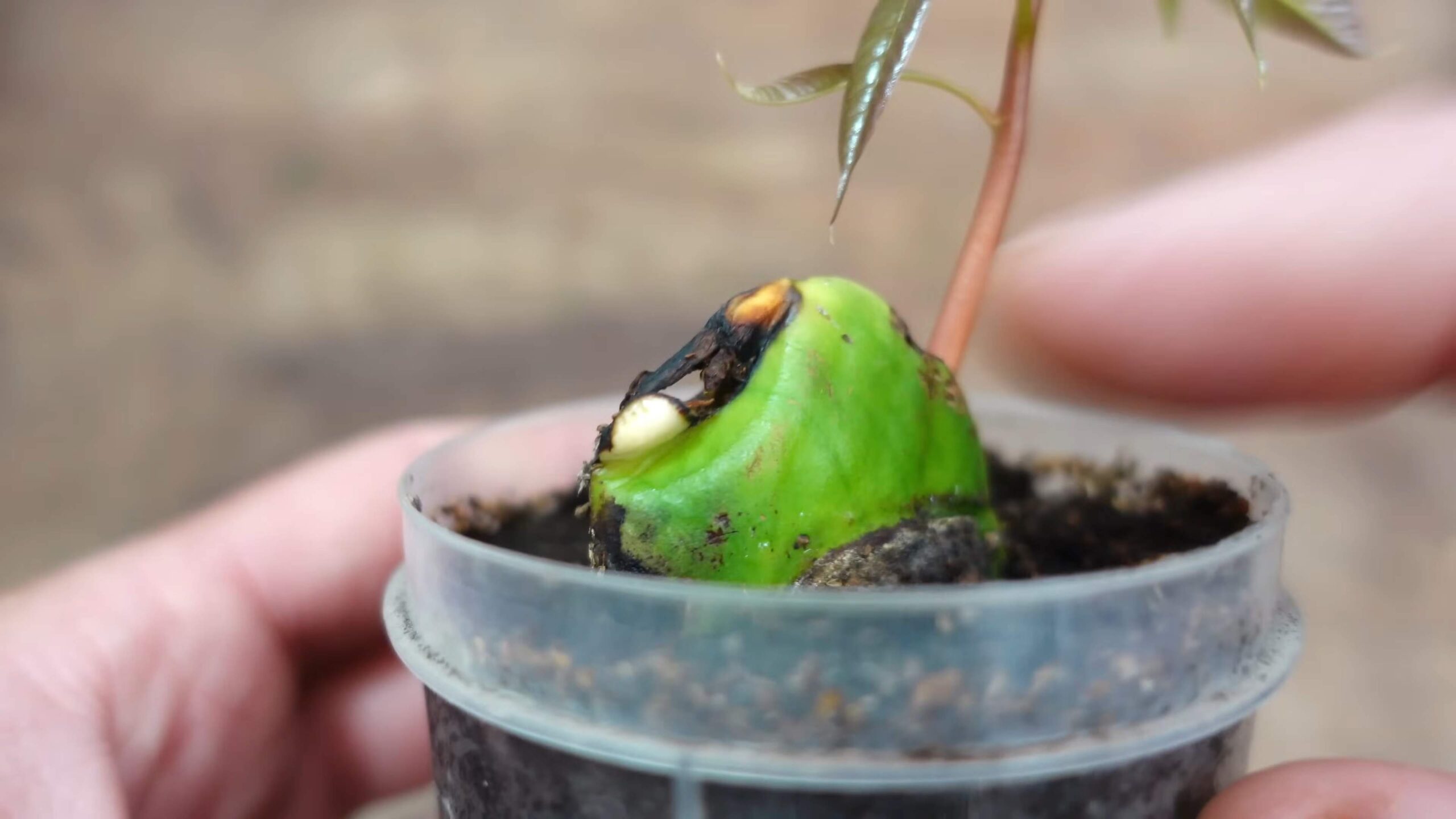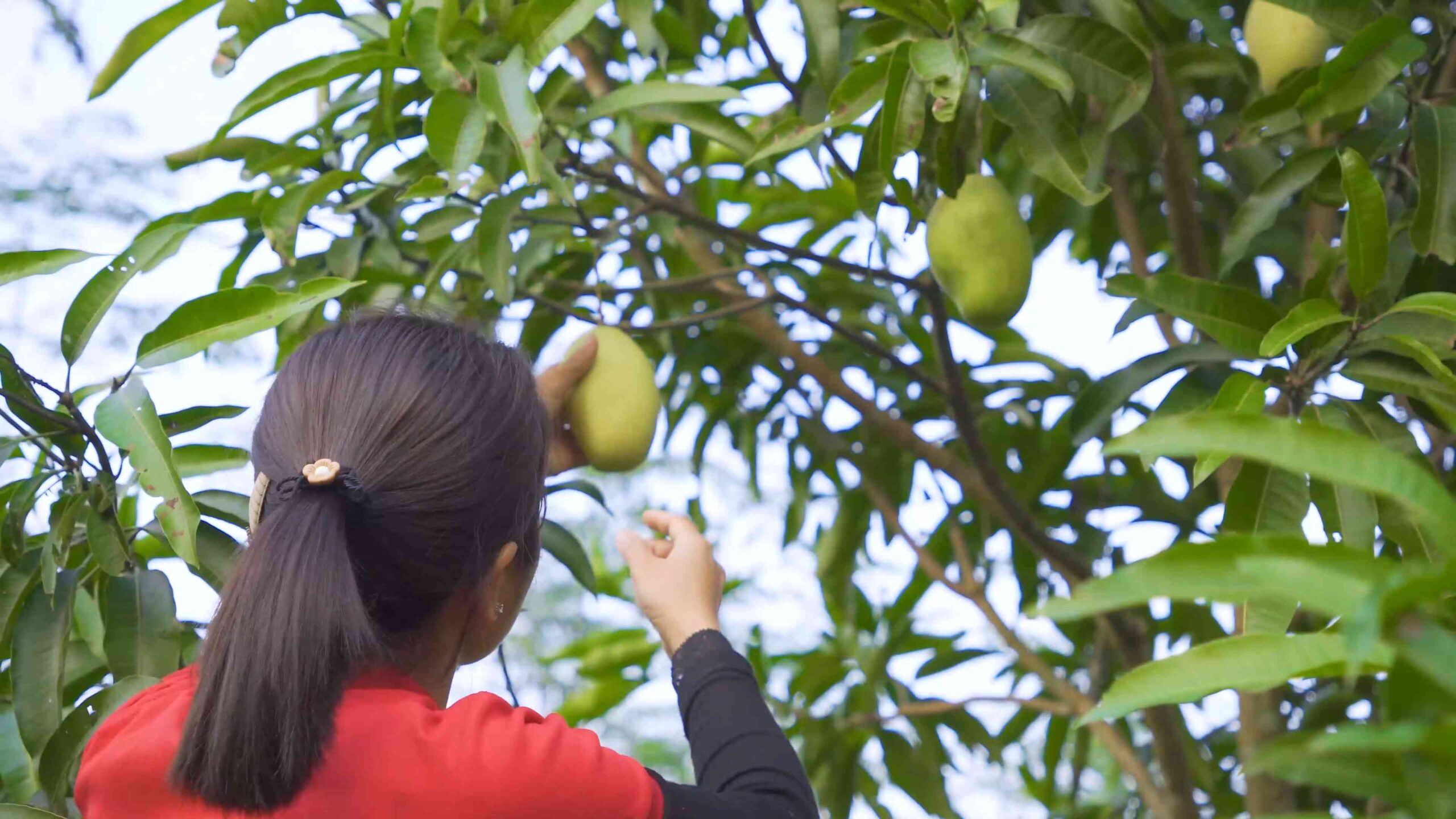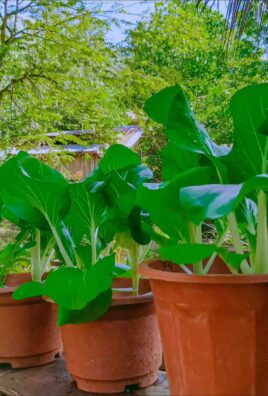Grow Mango Tree from Seed: Imagine biting into a juicy, sun-ripened mango, bursting with tropical flavor, knowing you nurtured that very tree from a humble seed! It sounds like a dream, right? Well, it doesn’t have to be! This DIY guide will unlock the secrets to cultivating your own mango tree, bringing a touch of the exotic to your backyard.
For centuries, mangoes have held a special place in cultures around the world, particularly in South Asia, where they originated. Revered for their delicious fruit and symbolic significance, mangoes are often associated with prosperity, love, and even immortality. Now, you can participate in this rich history by embarking on your own mango-growing adventure.
Why should you learn this DIY trick? Because store-bought mangoes, while delicious, often lack the intense flavor of homegrown varieties. Plus, growing your own tree is incredibly rewarding! It’s a fantastic way to connect with nature, learn about plant life cycles, and enjoy the satisfaction of nurturing something from seed to fruit. I’m going to show you how easy it is to grow mango tree from seed, even if you don’t have a green thumb. Let’s get started and transform your garden into a tropical paradise!

Growing Your Own Mango Tree From Seed: A Tropical Adventure!
Okay, so you want to grow a mango tree from seed? Awesome! It’s a bit of a journey, but trust me, the satisfaction of nurturing your own tropical fruit tree is totally worth it. I’ve done this myself, and I’m here to guide you through every step. Let’s get started!
Choosing the Right Mango and Preparing the Seed
First things first, not all mangoes are created equal when it comes to growing from seed. You need to pick the right one!
* Variety Matters: Some mango varieties are polyembryonic, meaning they can produce multiple seedlings from a single seed. These are your best bet! Look for varieties like Tommy Atkins, Haden, or Kent. These are commonly found in grocery stores and have a higher success rate.
* Ripeness is Key: Choose a mango that’s ripe, but not overripe. It should be fragrant and slightly soft to the touch. An overripe mango might have a seed that’s already started to rot.
* Freshness is Crucial: The fresher the mango, the better the chances of germination. Don’t let it sit around for too long before you extract the seed.
Now, let’s get that seed out!
1. Enjoy the Mango! Okay, this is the best part. Eat the delicious mango flesh! Try to remove as much of the pulp as possible from the seed. This will help prevent mold growth later on.
2. Clean the Seed: Rinse the seed thoroughly under running water. Use a scrub brush to remove any remaining pulp.
3. Drying (Optional, but Recommended): Let the seed dry for a day or two in a well-ventilated area. This helps prevent fungal growth. Don’t let it dry out completely, though. You want it to be slightly dry to the touch, not rock hard.
Cracking the Seed and Extracting the Kernel
This is where things get a little tricky, but don’t worry, I’ll walk you through it. The mango seed actually has a hard husk around the kernel inside. We need to get to that kernel!
* Safety First! Wear gloves and eye protection. This process can be a bit messy, and you don’t want to get any splinters or debris in your eyes.
* Tools You’ll Need: You’ll need a sharp knife (a sturdy utility knife or even a small hatchet works well), a hammer (optional), and a stable surface to work on.
* The Goal: We want to carefully crack open the husk without damaging the kernel inside.
Here’s how to do it:
1. Locate the Seam: Examine the mango seed husk. You’ll notice a seam running along the edge. This is where the husk naturally splits.
2. Carefully Cut or Pry: Using your knife, carefully try to pry open the seam. You might need to gently tap the knife with a hammer to get it started. Be patient and avoid applying too much force, as you could damage the kernel.
3. Alternative Method (Hammer): If you’re having trouble with the knife, you can try gently tapping the husk with a hammer. Place the seed on a hard surface and tap along the seam. Again, be very careful not to crush the kernel.
4. Extract the Kernel: Once you’ve cracked the husk open, carefully remove the kernel. It looks like a large bean. It’s usually light brown or tan in color.
Germinating the Mango Kernel
Now for the exciting part – getting that kernel to sprout! There are a couple of methods you can use. I’ll describe both, and you can choose the one that works best for you.
Method 1: Paper Towel Method (My Preferred Method)
This method allows you to easily monitor the germination process.
* What You’ll Need: Paper towels, a resealable plastic bag, and water.
Here’s how to do it:
1. Moisten the Paper Towels: Dampen a few paper towels with water. They should be moist, but not soaking wet.
2. Wrap the Kernel: Place the mango kernel on the damp paper towels and fold the towels over it to completely cover it.
3. Seal in a Bag: Place the wrapped kernel in a resealable plastic bag. This will help retain moisture.
4. Warm Location: Place the bag in a warm location, such as on top of your refrigerator or near a sunny window (but not in direct sunlight).
5. Check Regularly: Check the kernel every few days. Make sure the paper towels are still moist. If they’re drying out, add a little more water.
6. Wait for Sprouts: In a week or two (sometimes longer, depending on the variety and conditions), you should see a root and a shoot emerging from the kernel.
Method 2: Direct Planting Method
This method involves planting the kernel directly into soil.
* What You’ll Need: A small pot (about 6-8 inches in diameter), well-draining potting mix, and water.
Here’s how to do it:
1. Prepare the Pot: Fill the pot with well-draining potting mix.
2. Plant the Kernel: Plant the mango kernel horizontally, with the slightly curved side facing up. Cover it with about an inch of soil.
3. Water Gently: Water the soil gently until it’s moist, but not waterlogged.
4. Warm Location: Place the pot in a warm location with indirect sunlight.
5. Keep Moist: Keep the soil consistently moist, but not soggy.
6. Wait for Sprouts: It may take a few weeks for the seedling to emerge from the soil. Be patient!
Planting the Sprouted Kernel
Once your kernel has sprouted (using either method), it’s time to plant it in a pot.
* Choosing the Right Pot: Select a pot that’s at least 6-8 inches in diameter. Make sure it has drainage holes.
* Potting Mix: Use a well-draining potting mix. You can also add some perlite or vermiculite to improve drainage.
Here’s how to plant the sprouted kernel:
1. Prepare the Pot: Fill the pot with potting mix, leaving about an inch of space at the top.
2. Gently Remove the Sprout: If you used the paper towel method, carefully remove the sprouted kernel from the bag. Be very gentle, as the roots are delicate.
3. Plant the Sprout: Make a small hole in the soil and carefully place the sprouted kernel in the hole. The root should be pointing downwards, and the shoot should be pointing upwards.
4. Cover with Soil: Gently cover the kernel with soil, leaving the shoot exposed.
5. Water Gently: Water the soil gently until it’s moist, but not waterlogged.
Caring for Your Mango Seedling
Now that your mango seedling is planted, it’s important to provide it with the right care to help it thrive.
* Sunlight: Mango seedlings need plenty of sunlight. Place the pot in a location that receives at least 6 hours of direct sunlight per day. If you don’t have enough natural sunlight, you can supplement with a grow light.
* Watering: Water your mango seedling regularly, but don’t overwater it. Allow the soil to dry out slightly between waterings. Overwatering can lead to root rot.
* Fertilizing: Fertilize your mango seedling every few weeks with a balanced fertilizer. Follow the instructions on the fertilizer label.
* Temperature: Mangoes are tropical plants and prefer warm temperatures. Keep your seedling in a location that’s consistently warm, ideally between 70-80°F (21-27°C). Protect it from frost.
* Repotting: As your mango seedling grows, you’ll need to repot it into larger pots. Repot it when the roots start to outgrow the pot.
* Pruning: Prune your mango seedling to encourage branching and a bushy growth habit. You can prune it in the spring or summer.
Patience is Key!
Growing a mango tree from seed takes time and patience. It can take several years for your tree to start producing fruit. But don’t get discouraged! Enjoy the process of watching your tree grow and develop. And who knows, maybe one day you’ll be enjoying delicious, homegrown mangoes!
Important Considerations:
* Grafting: Mango trees grown from seed may not produce fruit that is identical to the parent tree. If you want to ensure that your tree produces a specific type of mango, you’ll need to graft it with a scion from a known variety. Grafting is a more advanced technique, but it can be worth it

Conclusion
So, there you have it! Growing a mango tree from seed isn’t just a fun project; it’s a rewarding journey that connects you to the natural world and provides the potential for delicious, homegrown fruit. While it requires patience and a little dedication, the satisfaction of nurturing a tiny seed into a thriving tree is unparalleled. This DIY trick is a must-try for anyone who loves gardening, enjoys a challenge, or simply wants to experience the magic of watching life unfold.
Think of the possibilities! Imagine gifting a young mango tree to a friend or family member, sharing the fruits of your labor (literally!) with your community, or simply enjoying the shade and beauty of your own homegrown mango tree for years to come.
Don’t be afraid to experiment with different mango varieties. Each variety has its own unique flavor profile and growth characteristics. Consider trying Tommy Atkins for its disease resistance, Haden for its vibrant color, or Alphonso for its exceptional sweetness. You can even try grafting different varieties onto your seedling once it’s established to create a multi-flavored mango tree!
Another variation to consider is the growing medium. While a standard potting mix works well, you can also experiment with adding perlite or vermiculite to improve drainage and aeration. Some gardeners even swear by using a slightly acidic soil mix to mimic the natural environment of mango trees.
We encourage you to take the plunge and try this DIY trick for yourself. It’s a fantastic way to learn about botany, connect with nature, and potentially enjoy delicious, homegrown mangoes. Remember to document your progress, take pictures, and share your experience with us! We’d love to hear about your successes, challenges, and any tips you discover along the way. Share your stories and photos on our social media pages using #GrowYourOwnMango and let’s create a community of mango-growing enthusiasts!
Ultimately, successfully growing a mango tree from seed is a testament to your patience and dedication. It’s a project that offers not only the potential for delicious fruit but also a deep connection to the natural world. So, grab a mango seed, follow these steps, and embark on this exciting journey. You might just surprise yourself with what you can achieve!
Frequently Asked Questions (FAQ)
1. How long does it take to grow a mango tree from seed?
Growing a mango tree from seed is a long-term project. Germination can take anywhere from 1 to 4 weeks, depending on the freshness of the seed and the environmental conditions. After germination, it can take several years (typically 3-6 years) for the tree to mature and produce fruit. Patience is key! Remember that growing conditions and mango variety will also affect the time it takes to bear fruit.
2. What kind of mango seed should I use?
The best mango seed to use is one from a ripe, locally grown mango. This increases the chances of the seedling being adapted to your climate. Avoid using seeds from imported mangoes, as they may not be as well-suited to your growing conditions. Also, ensure the seed is fresh and hasn’t dried out. The fresher the seed, the higher the germination rate.
3. What are the ideal growing conditions for a mango tree?
Mango trees thrive in warm, sunny climates. They need at least 6-8 hours of direct sunlight per day. The ideal temperature range is between 70°F and 90°F (21°C and 32°C). They also need well-draining soil to prevent root rot. Protect young trees from frost, as they are sensitive to cold temperatures.
4. How often should I water my mango seedling?
Water your mango seedling regularly, especially during the first few months. Keep the soil consistently moist but not waterlogged. Allow the top inch of soil to dry out between waterings. As the tree matures, you can reduce the frequency of watering, but ensure the soil remains adequately moist, especially during dry periods.
5. What kind of fertilizer should I use for my mango tree?
Use a balanced fertilizer (e.g., 10-10-10) during the growing season (spring and summer). Follow the instructions on the fertilizer package. You can also use organic fertilizers like compost or manure. Avoid over-fertilizing, as this can damage the tree. A slow-release fertilizer is also a good option for providing consistent nutrients.
6. How do I protect my mango tree from pests and diseases?
Regularly inspect your mango tree for signs of pests or diseases. Common pests include aphids, scale, and mealybugs. Diseases can include anthracnose and powdery mildew. Treat infestations promptly with appropriate insecticides or fungicides. You can also use organic pest control methods like neem oil or insecticidal soap. Good air circulation and proper watering can also help prevent diseases.
7. Can I grow a mango tree indoors?
While it’s possible to start a mango tree indoors, it will eventually need to be transplanted outdoors or into a very large container. Mango trees need a lot of sunlight and space to grow. If you’re growing it indoors, provide it with as much sunlight as possible and consider using a grow light. Be aware that indoor mango trees may not fruit as readily as those grown outdoors.
8. How do I prune my mango tree?
Pruning is important for shaping the tree, removing dead or diseased branches, and promoting fruit production. Prune your mango tree in late winter or early spring, before new growth begins. Remove any crossing or rubbing branches to improve air circulation. You can also prune to control the size and shape of the tree.
9. What if my mango seed doesn’t germinate?
Not all mango seeds will germinate. Several factors can affect germination rates, including the freshness of the seed, the temperature, and the moisture level. If your seed doesn’t germinate after a few weeks, try another seed. You can also try scarifying the seed coat (lightly scratching it) to help water penetrate.
10. Is it better to grow a mango tree from seed or buy a grafted tree?
Growing a mango tree from seed is a fun and rewarding experience, but it can take longer to produce fruit compared to a grafted tree. Grafted trees are clones of known varieties and will produce fruit that is true to type. If you want to ensure you get a specific variety of mango and want fruit sooner, buying a grafted tree is the better option. However, if you enjoy the challenge and don’t mind waiting, growing from seed can be a very satisfying experience.





Leave a Comment